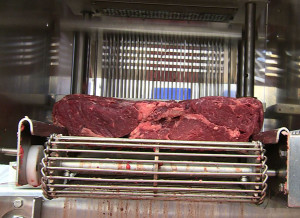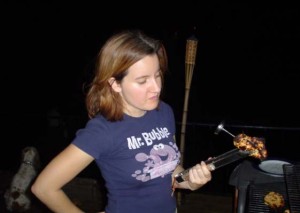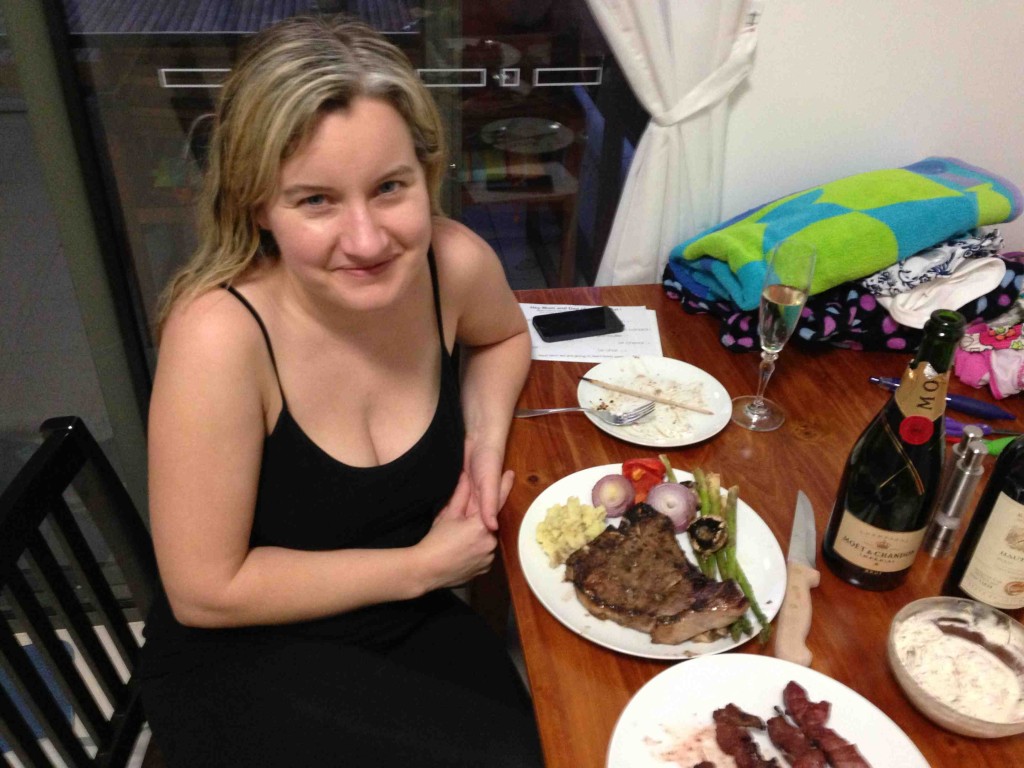It’s always BBQ season. In Canada I would BBQ in February. In the snow.
 Researchers have quantified inactivation of Shiga toxin–producing Escherichia coli (STEC) cells within knitted/cubed beef steaks following cooking on a nonstick griddle. Both faces of each beef cutlet (ca. 64 g; ca. 8.5 cm length by 10.5 cm width by 0.75 cm height) were surface inoculated (ca. 6.6 log CFU/g) with 250 μl of a rifampin-resistant cocktail composed of single strains from each of eight target serogroups of STEC: O26:H11, O45:H2, O103:H2, O104:H4, O111:H2, O121:H19, O145:NM, and O157:H7.
Researchers have quantified inactivation of Shiga toxin–producing Escherichia coli (STEC) cells within knitted/cubed beef steaks following cooking on a nonstick griddle. Both faces of each beef cutlet (ca. 64 g; ca. 8.5 cm length by 10.5 cm width by 0.75 cm height) were surface inoculated (ca. 6.6 log CFU/g) with 250 μl of a rifampin-resistant cocktail composed of single strains from each of eight target serogroups of STEC: O26:H11, O45:H2, O103:H2, O104:H4, O111:H2, O121:H19, O145:NM, and O157:H7.
Next, inoculated steaks were (i) passed once through a mechanical tenderizer and then passed one additional time through the tenderizer perpendicular to the orientation of the first pass (single cubed steak; SCS) or (ii) passed once through a mechanical tenderizer, and then two tenderized cutlets were knitted together by passage concomitantly through the tenderizer two additional times perpendicular to the orientation of the previous pass (double cubed steak; DCS). SCS and DCS were individually cooked for up to 3.5 min per side in 30 ml of extra virgin olive oil heated to 191.5°C (376.7°F) on a hard-anodized aluminum nonstick griddle using a flat-surface electric ceramic hot plate.
Regardless of steak preparation (i.e., single versus double cubed steaks), as expected, the longer the cooking time, the higher the final internal temperature, and the greater the inactivation of STEC cells within cubed steaks. The average final internal temperatures of SCS cooked for up 2.5 min and DCS cooked for up to 3.5 min ranged from 59.8 to 94.7°C and 40.3 to 82.2°C, respectively. Cooking SCS and DCS on an aluminum griddle set at ca. 191.5°C for 0.5 to 2.5 min and 1.0 to 3.5 min per side, respectively, resulted in total reductions in pathogen levels of ca. 1.0 to ≥6.8 log CFU/g.
These data validated that cooking SCS (ca. 0.6 cm thick) or DCS (ca. 1.3 cm thick) on a nonstick aluminum griddle heated at 191.5°C for at least 1.25 and 3.0 min per side, respectively, was sufficient to achieve a 5.0log reduction in the levels of the singlesteak to achieve a 5.0log reduction in the levels of the single strains from each of the eight target STEC serogroups tested.
Thermal inactivation of shiga toxin–producing Escherichia coli cells within cubed beef steaks following cooking on a griddle
Journal of Food Protection
Swartz, Richard S.; Luchansky, John B.; Kulas, Megan; Shoyer, Bradley A.; Shane, Laura E.; Strasser, Hannah; Munson, Madison; Porto-Fett, Anna C. S.
http://www.ingentaconnect.com/content/iafp/jfp/2015/00000078/00000005/art00021




